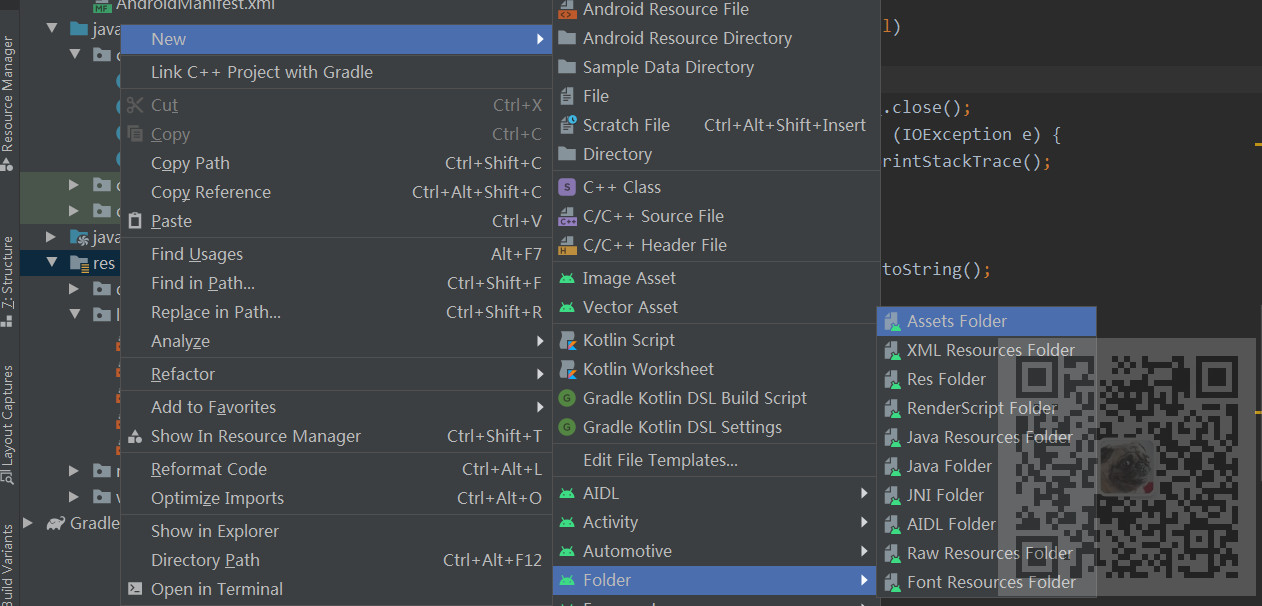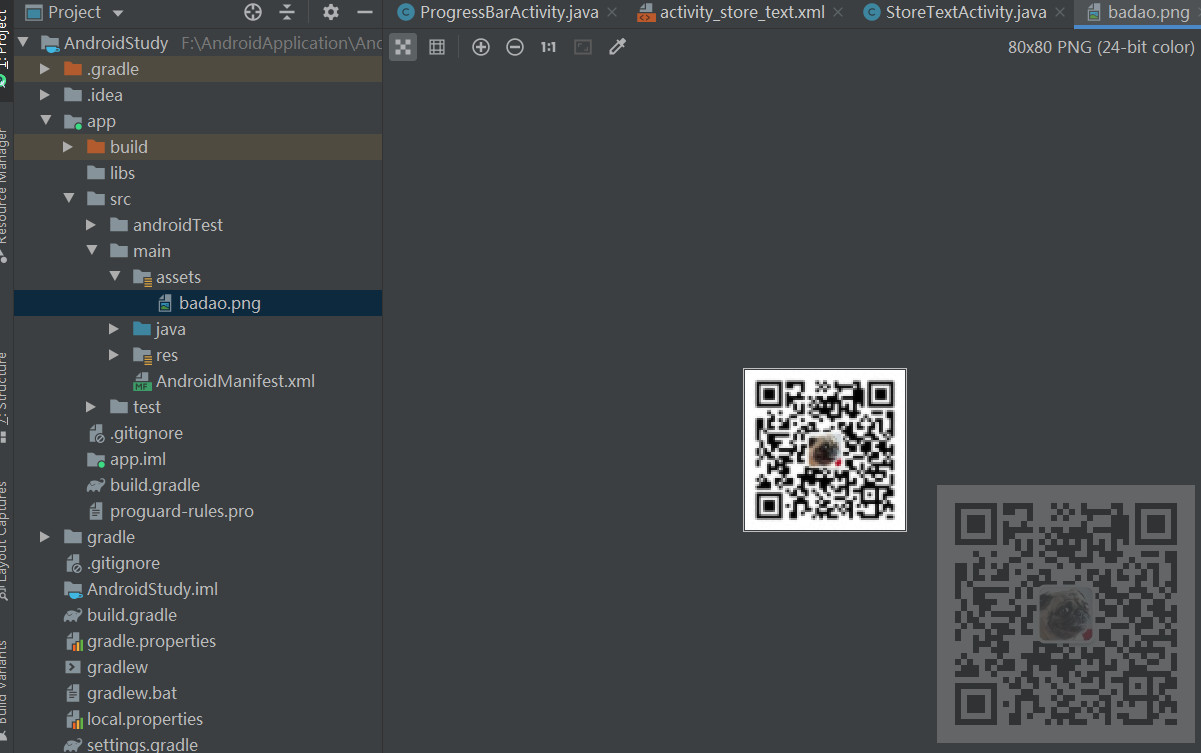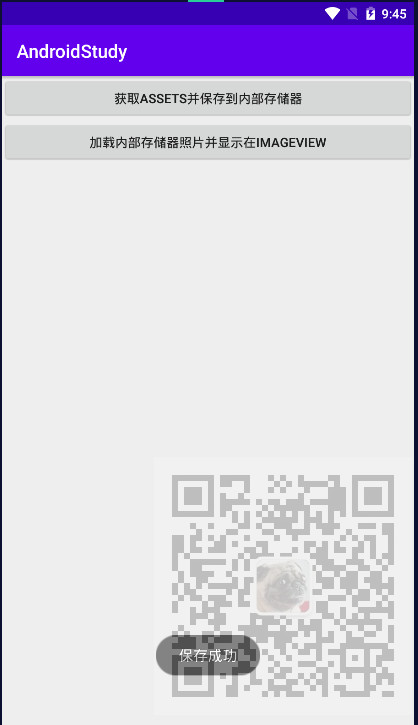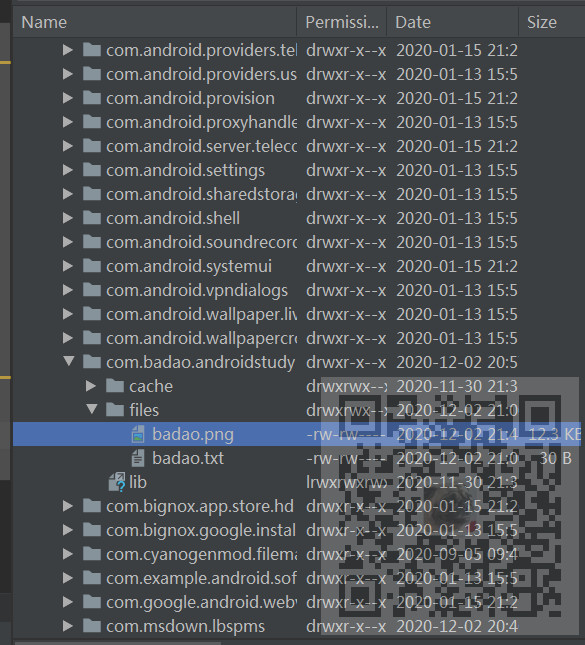场景
Android系统为每个新设计的程序提供了/assets目录,这个目录保存的文件可以打包在程序里。/res和/assets的不同点是,android不为/assets下的文件生成ID。如果使用/assets下的文件,需要指定文件的路径和文件名。assets 可以被看做随应用打包的微型文件系统,支持任意层次的文件目录结构。正因为这点,游戏这种需要加载大量图片和声音资源的应用通常都会使用它。assets目录中的所有文件都会随应用打包。assets类资源放在工程根目录的assets子目录下,它里面保存的是一些原始的文件,可以以任何方式来进行组织。这些文件最终会被原装不动地打包在apk文件中。如果我们要在程序中访问这些文件,那么就需要指定文件名来访问。
注:
博客:
https://blog.csdn.net/badao_liumang_qizhi
关注公众号
霸道的程序猿
获取编程相关电子书、教程推送与免费下载。
实现
在res下右键New-Folder-Assets Folder

然后确认assets的位置

点击Finish即可,然后在assets下添加一个文件

新建一个activity,并在布局xml文件中添加如下
<?xml version="1.0" encoding="utf-8"?> <LinearLayout xmlns:android="http://schemas.android.com/apk/res/android" xmlns:app="http://schemas.android.com/apk/res-auto" xmlns:tools="http://schemas.android.com/tools" android:layout_width="match_parent" android:layout_height="match_parent" android:orientation="vertical" tools:context=".AssetsActivity"> <Button android:id="@+id/btn_save" android:layout_width="match_parent" android:layout_height="wrap_content" android:text="获取assets并保存到内部存储器"/> <Button android:id="@+id/btn_show" android:layout_width="match_parent" android:layout_height="wrap_content" android:text="加载内部存储器照片并显示在ImageView"/> <ImageView android:id="@+id/imageview" android:layout_width="match_parent" android:layout_height="350dp"/> </LinearLayout>
然后修改activity的代码
package com.badao.androidstudy; import androidx.appcompat.app.AppCompatActivity; import android.content.Context; import android.content.res.AssetManager; import android.graphics.Bitmap; import android.graphics.BitmapFactory; import android.os.Bundle; import android.view.View; import android.widget.Button; import android.widget.ImageView; import android.widget.Toast; import java.io.FileInputStream; import java.io.FileOutputStream; import java.io.IOException; import java.io.InputStream; public class AssetsActivity extends AppCompatActivity { private Button btn_save; private Button btn_show; private ImageView imageView; @Override protected void onCreate(Bundle savedInstanceState) { super.onCreate(savedInstanceState); setContentView(R.layout.activity_assets); btn_save = findViewById(R.id.btn_save); btn_show = findViewById(R.id.btn_show); imageView = findViewById(R.id.imageview); //实现将图片文件从assets资源文件夹中读取并保存到本机内部存储器中 btn_save.setOnClickListener(new View.OnClickListener() { @Override public void onClick(View v) { AssetManager manager = getAssets(); InputStream is = null; FileOutputStream fos = null; try { //采用边读边写的方式 is = manager.open("badao.png"); fos = openFileOutput("badao.png",Context.MODE_PRIVATE); byte[] buffer = new byte[1024]; int len = -1; while ((len = is.read(buffer)) !=-1) { fos.write(buffer,0,len); } Toast.makeText(AssetsActivity.this,"保存成功",Toast.LENGTH_LONG).show(); } catch (IOException e) { e.printStackTrace(); }finally { if(fos!=null) { try { fos.close(); } catch (IOException e) { e.printStackTrace(); } } if(fos!=null) { try { fos.close(); } catch (IOException e) { e.printStackTrace(); } } } } }); //将图片从内部存储器中加载出来并显示在ImageView中 btn_show.setOnClickListener(new View.OnClickListener() { @Override public void onClick(View v) { String filePath = getFilesDir().getAbsolutePath()+"/badao.png"; Bitmap bitmap = BitmapFactory.decodeFile(filePath); imageView.setImageBitmap(bitmap); } }); } }
点击第一个按钮将assets下的图片保存到内部存储器中

然后会在data/data/包名/files下查看到保存的文件

然后点击第二个按钮从内部存储器中加载图片并显示在ImageView中
